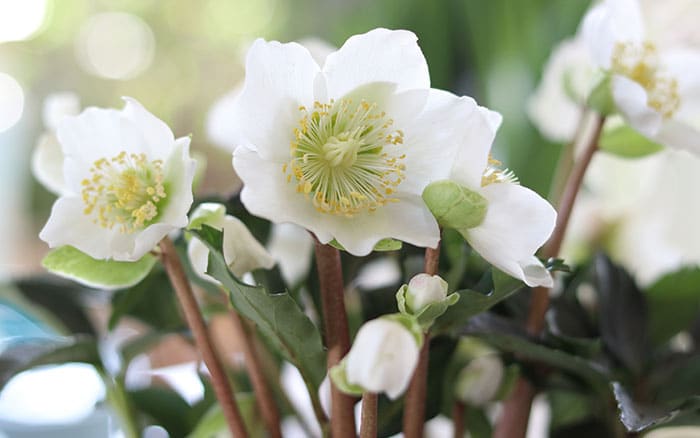The beautiful flowers of hellebores will undoubtedly make you marvel at the beauty and resilience of nature, as they open their delicate petals in the depths of winter. So, if you need convincing, here’s why you should have them in your garden and how to take care of them best.
Why to choose hellebores
Hellebores are popular with gardeners because they flower in cold winter and spring, bringing a touch of colour to your garden. There are around 20 species of this herbaceous perennial, but the most popular are H. orientalis and its colourful hybrids.
The plants are easy to grow because they are hardy (frost-resistant), so you don’t need to worry about them dying.

They flower in winter and early spring from Christmas to Easter, so they are often known as Christmas roses or Lenten roses.
Although there are fewer pollinators around when these flowers are blooming, they provide a good source or nectar and pollen for any visiting pollinators.
How to plant hellebores

Hellebores are excellent for bringing early colour to shady herbaceous borders and the areas between deciduous shrubs. They are also happy in dappled shade under trees. Plant them in early spring in rich, heavy, limey soil that won’t dry out in the summer.
Hellebores can be planted at any time of the year when the soil isn’t frozen.
But bear in mind that they don’t like being moved, so keep them in the same spot once they’ve been planted.
To keep them growing well, it’s ideal when new flowers and foliage grow, to cut back any old, large leaves. Mulching with organic matter every year will help too.
Plant combinations for hellebores
Good companion plants for helleborus include snowdrops, primula and pulmonaria. The flowers also contrasts nicely with the colourful stems of Cornus (dogwood) and the yellow flowers of Mahonia.
They also go well in a wintery hanging basket.

For a cool looking container, pair Helleborus niger (Christmas rose) with Hedera helix (common ivy) and variegated holly. The bright, white flower will contrast beautifully with the variegated foliage.
The flower colour ranges from pure white, cream and primrose yellow to shades of green, pink and pinky-red, and even deep purple and black.
Hellebore bowls

Bring hellebores into your home with this dynamic way of displaying them. To create hellebore bowls, simply cut the flower head with about an inch left of the stem attached. Then, dip the ends of the stem into boiling water to seal them.
Then grab a bowl, or deep tray filled with water and float the flowers in them to create a beautiful display that lasts around a week. It’s a wonderful way of getting up close to the pretty flowers and bringing them indoors for you to enjoy.

Leave A Comment